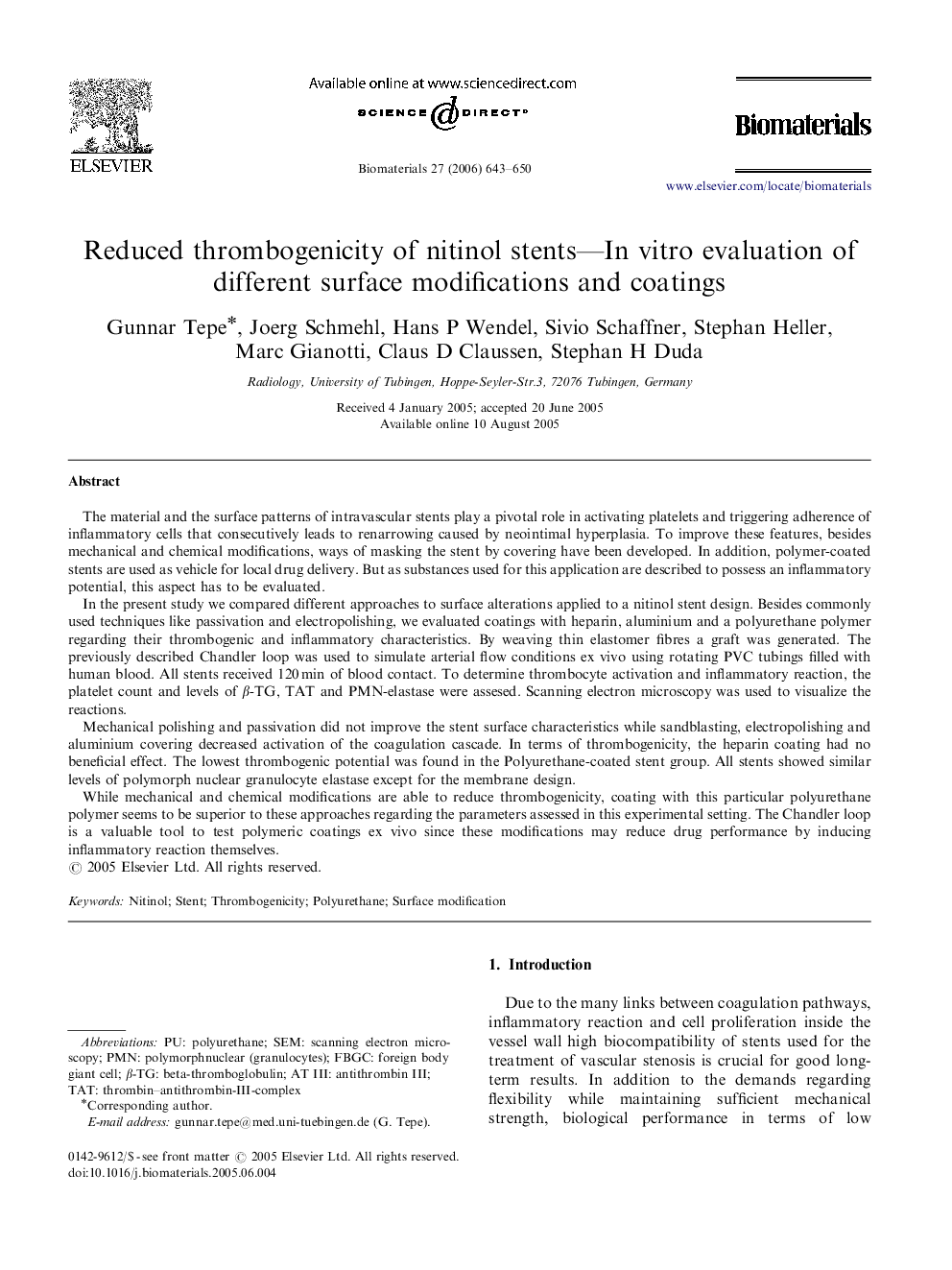| کد مقاله | کد نشریه | سال انتشار | مقاله انگلیسی | نسخه تمام متن |
|---|---|---|---|---|
| 11993 | 771 | 2006 | 8 صفحه PDF | دانلود رایگان |

The material and the surface patterns of intravascular stents play a pivotal role in activating platelets and triggering adherence of inflammatory cells that consecutively leads to renarrowing caused by neointimal hyperplasia. To improve these features, besides mechanical and chemical modifications, ways of masking the stent by covering have been developed. In addition, polymer-coated stents are used as vehicle for local drug delivery. But as substances used for this application are described to possess an inflammatory potential, this aspect has to be evaluated.In the present study we compared different approaches to surface alterations applied to a nitinol stent design. Besides commonly used techniques like passivation and electropolishing, we evaluated coatings with heparin, aluminium and a polyurethane polymer regarding their thrombogenic and inflammatory characteristics. By weaving thin elastomer fibres a graft was generated. The previously described Chandler loop was used to simulate arterial flow conditions ex vivo using rotating PVC tubings filled with human blood. All stents received 120 min of blood contact. To determine thrombocyte activation and inflammatory reaction, the platelet count and levels of β-TG, TAT and PMN-elastase were assesed. Scanning electron microscopy was used to visualize the reactions.Mechanical polishing and passivation did not improve the stent surface characteristics while sandblasting, electropolishing and aluminium covering decreased activation of the coagulation cascade. In terms of thrombogenicity, the heparin coating had no beneficial effect. The lowest thrombogenic potential was found in the Polyurethane-coated stent group. All stents showed similar levels of polymorph nuclear granulocyte elastase except for the membrane design.While mechanical and chemical modifications are able to reduce thrombogenicity, coating with this particular polyurethane polymer seems to be superior to these approaches regarding the parameters assessed in this experimental setting. The Chandler loop is a valuable tool to test polymeric coatings ex vivo since these modifications may reduce drug performance by inducing inflammatory reaction themselves.
Journal: Biomaterials - Volume 27, Issue 4, February 2006, Pages 643–650